Large parts of West Antarctic Ice Sheet could collapse 'in our lifetimes'
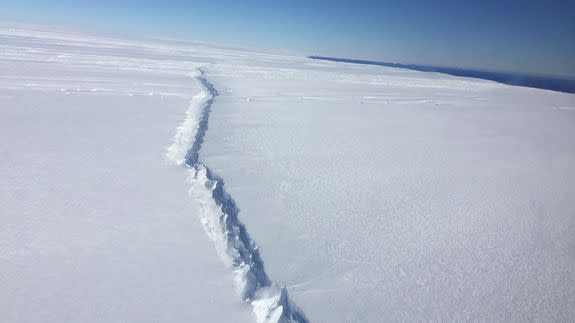
Scientists say they discovered the "troubling" reason why a massive iceberg splintered off one of West Antarctica's largest glaciers last year, and why this may not bode well for the future of the world's coastal megacities.
Warm ocean waters appear to have melted Pine Island Glacier from underneath, causing a deep subsurface crack that split the ice from the inside out, Ohio State University researchers found.
SEE ALSO: Global warming to cause fastest rate of sea level rise in human history
The 20-mile-long rift eventually broke through the surface and cleaved off a 225-square-mile iceberg in July 2015, according to their study, published Monday in the journal Geophysical Research Letters.
Their finding offers further evidence that large parts of the West Antarctic Ice Sheet could collapse in coming decades as human-caused climate change and other forces weaken glaciers. Such an event would trigger catastrophic sea level rise and coastal flooding around the world.
"It's generally accepted that it's no longer a question of whether the West Antarctic Ice Sheet will melt, it's a question of when," Ian Howat, the study's lead author and an associate professor of Earth sciences at Ohio State, said in a news release.
"This kind of rifting behavior provides another mechanism for rapid retreat of these glaciers, adding to the probability that we may see significant collapse of West Antarctica in our lifetimes," he added.
Weaker glaciers
Pine Island and the neighboring Thwaites Glacier act like plugs in a kitchen sink: they keep the West Antarctic Ice Sheet's ice streams from flowing directly into the ocean and boosting sea levels.
But as the ice shelves and land-based ice behind them break apart, the main ice sheet loses both its plugs and its defenses against the encroaching warming ocean.
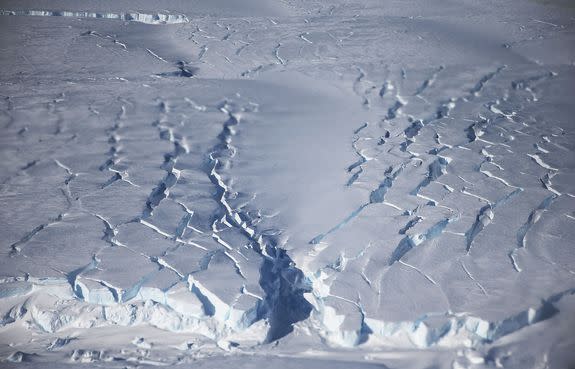
Image: mario tama/Getty Images
West Antarctica's collapse alone could cause sea levels to rise by more than a meter, or 3.4 feet, by 2100, according to a March study in Nature. Other studies project sea level rise of around 10 feet, an amount that would engulf megacities from New York and Miami to Manila and Dhaka.
Howat and his Ohio State team first noticed the Pine Island rift while they were analyzing Landsat 8 satellite images taken before the iceberg broke off in 2015. The images showed evidence of a rift, which scientists found had started nearly 20 miles inland in 2013, extending out over the next two years.
Rifts typically form on the thin, outermost stretches of an ice shelf that are most vulnerable to breaking into chunks. But this particular rift on Pine Island started near the center of the ice shelf, which tends to be sturdier.

Image: NASA/GSFC Scientific Visualization Studio
While scientists have observed inland rifts on the Greenland Ice Sheet, Monday's study is the first evidence of a deep subsurface rift opening within Antarctic ice.
Howat said the rift began at the bottom of a glacial valley in the ice shelf. Warming ocean water likely intruded far inland, weakening the center of the ice shelf from below and creating a deep crack.
"The really troubling thing is that there are many of these valleys further up-glacier," Howat said in the news release. "If they are actually sites of weakness that are prone to rifting, we could potentially see more accelerated ice loss in Antarctica."
Monday’s study will be particularly “useful” for glaciologists trying to project how ice sheets will respond to the changes around them, said Richard Alley, a climate expert and glaciologist at Penn State University, who was not involved in the new research.
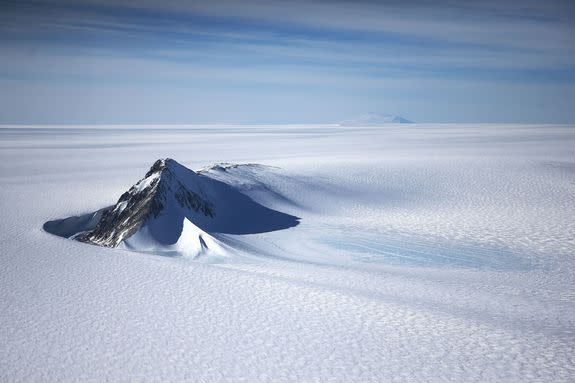
Image: Mario Tama/Getty Images
Fractures are often difficult to represent accurately in ice-sheet models, because it’s hard to know exactly how breaks will happen, Alley said.
“Think of the ceramic coffee cups you have seen dropped on hard floors — the ones that bounced, or chipped, or broke in a few pieces, or smashed,” Alley told Mashable.
He agreed there is solid scientific evidence that the West Antarctic Ice Sheet could experience significant collapse in our lifetimes.
“This is not certain, clearly, but is possible, depending both on decisions humans make, and on processes and conditions that we don’t fully know,” he said.
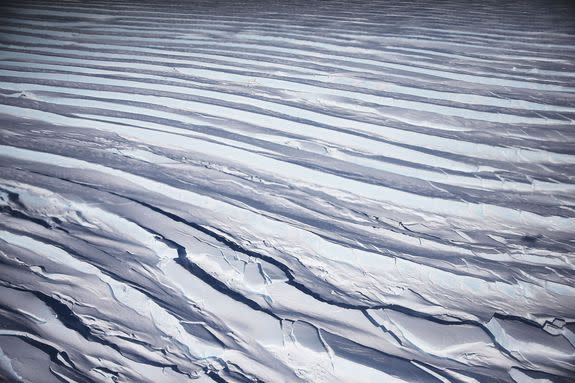
Image: Mario Tama/Getty Images
Ian Joughin, a senior engineer with the University of Washington’s Applied Physics Laboratory, said he was less certain that Monday’s study offered new insights on the stability of the West Antarctic Ice Sheet.
He said the Pine Island ice shelf naturally needs to calve icebergs regularly to keep pace with the ice flowing out of Antarctica. “The site where the calving occurred is not remarkably different than that where previous calving events have occurred,” Joughin told Mashable.
He said the new findings are “something to be concerned about, but it’s too soon to tell whether this might be a process that could significantly alter the already substantial pace of retreat” on Pine Island.
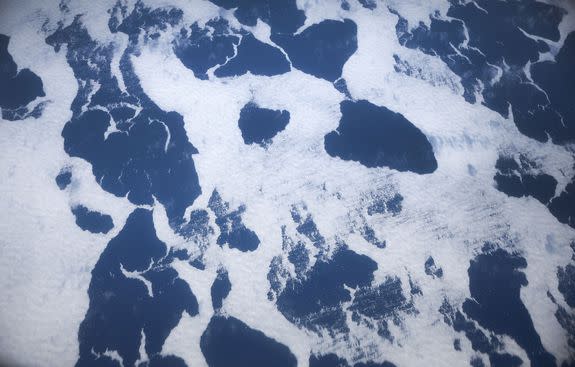
Image: Mario Tama/Getty Images
By studying this type of glacial breaking, scientists could be able to better understand when and how a larger collapse of the West Antarctic Ice Sheet might happen — but not how to stop it.
A separate study recently found that thinning ice and glacier retreat in West Antarctica is "unlikely to be reversible without a major change in marine or glaciological conditions."
The study, published Nov. 23 in the journal Nature, found that the Pine Island Glacier likely first became destabilized in the 1940s following an unusually strong and long-lasting El Niño event in the Pacific Ocean.
The researchers — a team of U.S., British, Dutch, German and Swiss scientists — didn't evaluate the role of human-caused greenhouse gas emissions and global warming in Pine Island's historical melting. But the team noted that, even after the 1940s-era El Niño ended and temperatures cooled off, the glacial retreat hasn't stopped.
